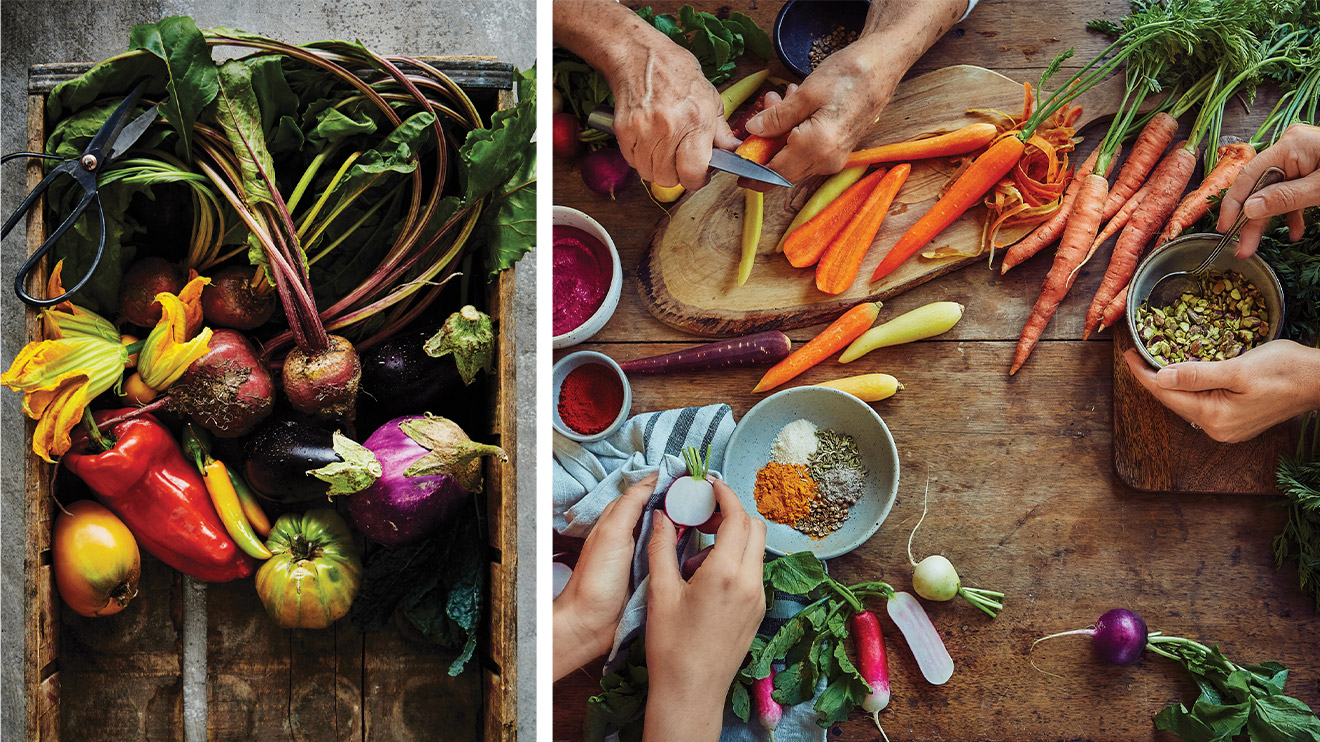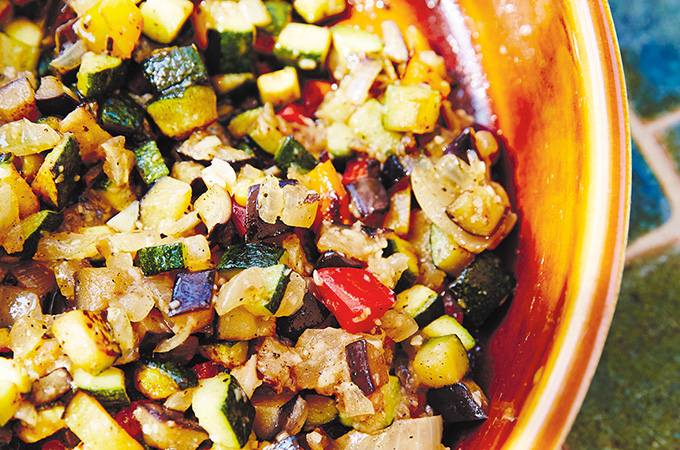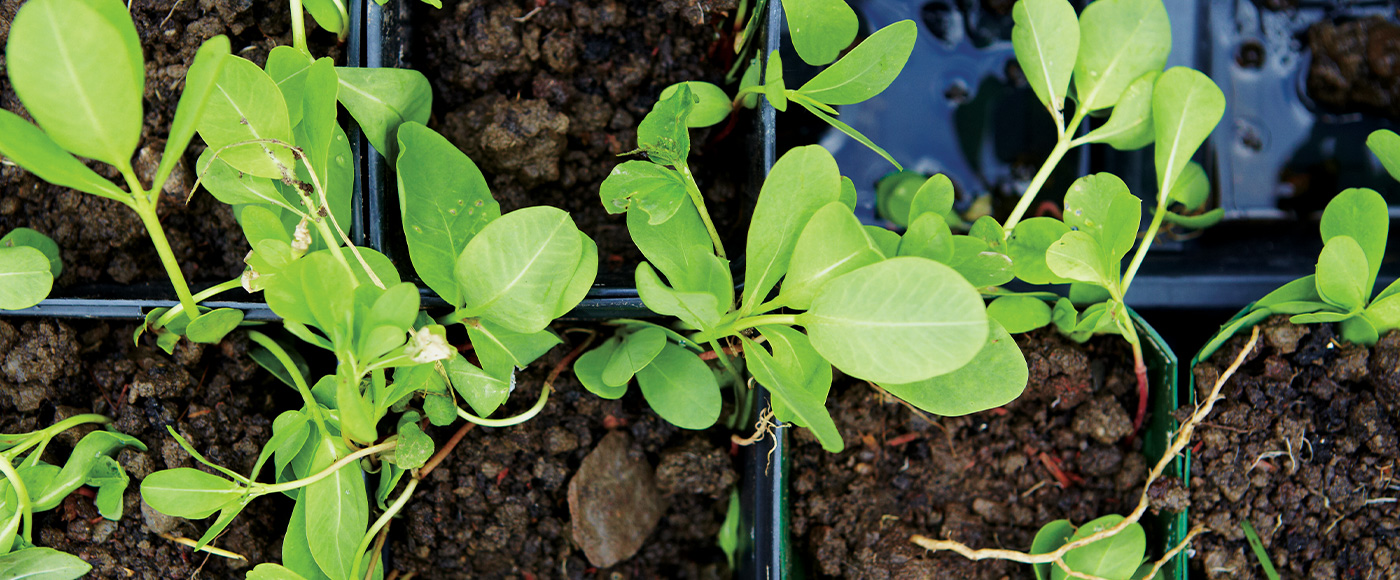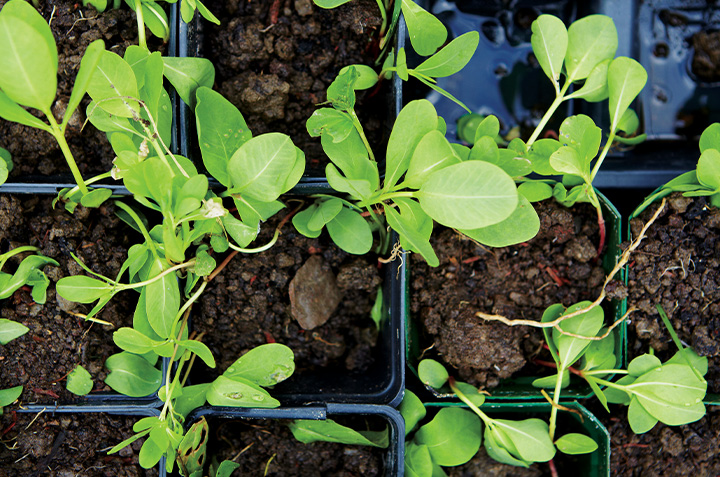
First things first: make a small plan to help you estimate how many plants you’ll need. You’ll find the required spacing between plants, as well as friendly—and not so friendly—varieties on seeding packets or online. Some plants keep insects away from their neighbours, while others are not compatible. The Montreal Botanical Garden has provided a good summary in their horticultural and botanical notebook. Set up your garden where you get the most hours of sunshine possible: keep your sunniest patches for Mediterranean vegetables like tomatoes, peppers, cucumber, eggplant and melons, while semi-shaded areas are good for lettuces, spinach and root vegetables.
Following these tips for the most common vegetables, you’ll be able to start your green adventure even in the whitest months of the year.
“I’m not a professional, I only share mistakes I’ve made so that you can avoid them!”

Here are a few tips on common vegetables:
GARLIC
Sow in the fall for a harvest of garlic flowers in early summer and bulbs a few weeks later. Harvesting the garlic flower is necessary for the development of the garlic bulb, because otherwise the plant’s energy will be put towards the flower and the bulb will remain very small.
EGGPLANT
This vegetable requires a lot of heat and sun. Personally, I go with smaller varieties. After several failures because I lack sun I’m trying again this year! A regular supply of fertilizer is required throughout the season.
ZUCCHINI
You’ll be surprised at how much a healthy zucchini plant can produce...and that they will become MASSIVE if you leave them in the garden 3 days too long! It’s a good excuse to make zucchini bread, ratatouille and soup.

Garden Vegetable Recipes
Zucchini and Date Bread

Garden Vegetable Recipes
Ratatouille with Garlic Purée
CARROTS
These are planted directly in soil and thinning is necessary. The seeds are so small, it’s difficult to distribute them properly, so space plants that are too close together. Otherwise, you will have (as I had) very thin mini-carrots! Some seed companies now offer seeds coated with a water-soluble product that makes them brightly coloured and larger—much easier to see and space in the dark soil. Another solution is to go with seedling ribbons where the seeds are already pre-spaced.
CUCUMBERS
These roots are very fragile, so sowing the seeds in a container of peat that will eventually go directly into the soil is ideal. A regular supply of fertilizer is required throughout the season. If you have a wall available, I advise you to add a trellis to make them climb, as cucumber plants take up a lot of space in the garden.
HERBS
It’s very easy and enjoyable to have fresh herbs on hand for the entire summer season. Plant them in the vegetable garden, in terracotta pots or in a planter on the edge of a balcony. Beware, however, of mint, which is very invasive—I plant mine in a terracotta pot that I place on the ground next to the other herbs.
BEANS AND PEAS
These are very easy to grow and require a trellis. You can also get nets from garden centres that can be installed easily (I watched online tutorials), and help the plants grow beautifully! Dwarf bean plants do not require any support, and personally, I prefer them as they are easy to harvest, plus the colour really contrasts with the green foliage. Another bonus? Children can pick snow peas in the late afternoon as a snack.
LETTUCE AND ARUGULA
These are easy to grow, withstand the cold and can be planted directly in the ground as soon as the soil is workable. A second harvest can be done in the fall, too, if planted in the summer. The lettuce can bloom quickly and is no longer good if you harvest it late, so keep your eye on it!
ROOT VEGETABLES
These are among the first vegetables to be able to tolerate the cold. Ideally, plant your seedlings every 2 weeks to spread out the harvest season. A second harvest may be made for radishes in the fall if you resow in the summer. My advice? Opt for fast-growing (and versatile) varieties like radishes.
MELONS
It’s a lot of fun for kids to see the melons grow! They need a regular supply of fertilizer and sun, then once the fruit grows, they must be protected from the ground by placing them on a special plastic saucer, a flat stone or a piece of cardboard. This prevents excess soil moisture from rotting one side of the melon.
TOMATOES
These are fragile and you’ll need to wait until there’s no longer a risk of frost (watch out for late May/early June nights in some areas). Space them well when planting and you’ll see that they will be very small in May/June, but as of July, with sun, fertilizer and watering, they’ll really start to grow. I get caught every year forgetting to stake them before they’ve gone too far: I can’t tell you how many times I’ve arrived at my cottage only to see the plants lying on the ground with broken branches because of the weight of the tomatoes! A final tip would be to choose your varieties according to the number of growth days available. In Estrie, I went with varieties of 80 days or less, because from September the growth is slow and I don’t want tons of green tomatoes to harvest (but we have recipes if this happens to you!). A regular supply of fertilizer is required throughout the season.
PEPPERS AND BELL PEPPERS
Again, these are fragile and you’ll need to wait until there’s no longer a risk of frost (watch out for late May/early June nights in some areas).
Happy planting!
Marisol

